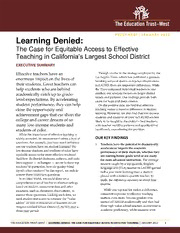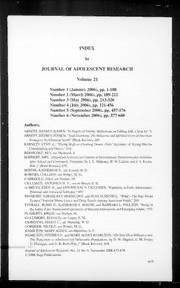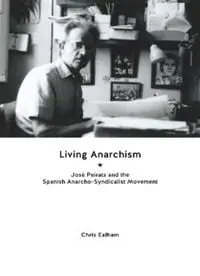
Living Anarchism: José Peirats and the Spanish Anarcho-syndicalist Movement PDF
Preview Living Anarchism: José Peirats and the Spanish Anarcho-syndicalist Movement
Living Anarchism José Peirats and the Spanish Anarcho-Syndicalist Movement Chris Ealham SELECTED LIST OF ACRONYMS CC. OO. Comisiones Obreras / Workers’ Commissions CEAP Comisión de Encuesta, Archivo y Propaganda / Enquiry, Archives, and Propaganda Commission CGT Confederación General del Trabajo / General Confederation of Labour CNT Confederación Nacional del Trabajo / National Confederation of Labour CCMA Comité Central de Milicies Antifeixistes / Central Committee of Anti-Fascist Militias ETA Euskadi Ta Askatasuna / Basque Homeland and Freedom FAI Federación Anarquista Ibérica / Iberian Anarchist Federation FIJL Federación Ibérica de Juventudes Libertarias / Iberian Federation of Libertarian Youth GAAR Groupes anarchistes d’action révolutionnaire / Revolutionary Action Anarchist Groups JARE Junta de Auxilio a los Republicanos Españoles / Board of Aid to the Spanish Republicans JJ. LL. Juventudes Libertarias / Libertarian Youth MLE-CNT (Consejo General del) Movimiento Libertario Español-CNT / (General Council of the) Spanish Libertarian Movement-CNT PCE Partido Comunista de España / Communist Party of Spain POUM Partido Obrero de Unificación Marxista / Marxist Unification Workers’ Party PSOE Partido Socialista Obrero Español / Spanish Socialist Workers’ Party PSUC Partit Socialista Unificat de Catalunya / Unified Socialist Party of Catalonia SEGUEF Sociedad de Estudios sobre la Guerra Civil y el Franquismo / Society for the Study of the Civil War and Francoism SERE Servicio de Evacuación de Refugiados Españoles / Evacuation Service of Spanish Refugees UGT Unión General de Trabajadores / General Union of Workers DEDICATION For four autodidacts: Gracia Ventura, a living example of human warmth; and Ornette Coleman, Charlie Mingus, and Gil Scott-Heron, musical geniuses and, in their different ways, revolutionaries. INTRODUCTION There are men who struggle for a day and they are good. There are men who struggle for a year and they are better. There are men who struggle many years, and they are better still. But there are those who struggle all their lives: These are the indispensable ones. —Bertolt Brecht This is a study of the life of José Peirats, of the human foundations of the anarchist movement, and of its twentieth-century history. It is then a study of the affective ties of kinship, friendship, and community that cemented this movement, the most powerful of its type in the world. It charts how the anarchists put into practice their core values of solidarity and mutual aid and the challenges they faced before and during the Second Republic, how they attempted the revolutionary transformation of society during the civil war, and how their plans were disrupted by exile during the dark night of Francoist repression; and, later, how they struggled to adjust to the new circumstances brought forth by the democratic dawn of the 1970s. Therefore, as well as the life history of an individual, this is a biography of a collective agent – the working class into which Peirats was born; it is a case study of the profound osmosis between the most radical section of the working class and the anarcho-syndicalist Confederación Nacional del Trabajo (CNT – National Confederation of Labour), a linkage that ensured that the life histories of cenetistas were inseparable from the organisational history of their trade union. For Peirats’s generation, the ‘Generation of ‘36’, who rose up against the injustices of Spanish society, the contours and vicissitudes of their lives were inextricably bound up with their activism. For this reason, anarchist and anarcho-syndicalist history is inseparable from Peirats’s biography – his life was intimately and enduringly tied to his revolutionary stance, to the commitments that flowed from his subversive thought, and to the conflicts into which he was drawn. As Peirats noted in a letter to a comrade in 1970, at the age of sixty-two: ‘I’ve done almost everything in the CNT: I’ve organised strikes, organised workers, spoken in assemblies, meetings, and given conferences, written articles, attended congresses, used pistols, and, sometimes, explosives; I’ve been in jail and collected lawsuits, mainly for libellous press articles [delitos de imprenta]. I know what it means to be naked and take a beating in a police station. I was the only secretary of the CNT in exile to enter Spain clandestinely when they were 1 still shooting people.’ In short, his was a life of subversion and adventure, of permanent resistance to all authority due to his enduring commitment to the cause of the oppressed. A biography of a figure like Peirats perforce means the reclamation of the historical memory of organised anarchism and its role in the twentieth century. My approach reflects the so-called ‘particularist’ perspective on social movements, which is concerned with the individual motivations and socialisation process of those who make up the movement and which focuses on biography and collective biography as a means of teasing out the meaning of 2 movement membership for the individual. Such an approach will doubtless be judged by some as hagiography (an irony as I write as an English-born historian and Peirats was scornful of both the English in general and of ‘professional’ 3 historians in particular). For some historians, my approach will be dismissed as ‘militant history’. These paragons of equitableness who triumphantly lay claim to a more ‘objective’ posture by virtue of having a position removed from what they designate as the ‘extremes’ of the political spectrum are either naïve or disingenuous, or both. Behind their claim of ‘objectivity’, those who criticise the history of the dispossessed as ‘militant history’ merrily ignore their own ideological baggage and positionality, all too often hypocritically retaining a blatantly partisan defence of specific political positions, be it a militant attachment to social democracy, liberalism, or, in some cases, nostalgia for Francoism. I recognise unashamedly that there are many aspects of Peirats’s life that I find admirable. His lifelong struggle in the face of huge adversity to transcend the cultural deficit imposed on him from birth is just an example. I had first-hand experience of this in the hierarchical British society into which I was born. I was the first member of my extended family to set foot in a university. Schooled within a highly stratified British state education system, I bucked the trend among my classmates and was the solitary pupil in my school year to go on to university in Thatcher’s highly polarised Britain. Peirats was a humble man and, despite suffering significant health problems from infancy, he was a passionate and energetic fighter until the last of his eighty-one years. Similarly, whether we agree with his ideals or not, Peirats’s tenacious defence of his beliefs and his readiness to risk his life and liberty in the pursuit of a collective project that he believed would benefit humanity strikes me as eminently laudable. Unsurprisingly, the sacrifices and tribulations of the dispossessed will prove elusive and unintelligible to those critics who fail to see 4 beyond their own sense of privilege and snobbery. I do not wish to suggest that Peirats was a perfect individual or that he was a flawless anarchist. Like all human beings, he had his defects, his outbursts of rancour – at times, in debates, he could be abrupt. As an anarchist thinker, he did not evolve massively in the course of his life; for instance, there is little evidence he truly embraced the ‘New Left’ currents of the 1960s. So, while he was a lifelong defender of freedom, his views on homosexuality or feminism did not reflect the growing awareness of distinctive patterns of oppression. Yet, while being critical at times, my aim is not to berate a dead man for this or that foible but to understand what motivated Peirats and how the range of social, personal, political, organisational, cultural, and economic forces shaped and constrained his behaviour and his thinking. Within Spanish historiography, in recent years biography has been skilfully 5 deployed as a tool of historical enquiry. This is to be applauded, for biography, a genre that exists on the frontier of literature and, in some cases, psychology, presents specific challenges for a historian. I do not profess to have transcended these pitfalls, especially since my work on the history of social movements has tended to focus more on collective psychology rather than that of the individual. Yet social history has much to contribute to the older field of biography, since it is clear that life histories and experiences form part of broader histories of social groups. The study of a man like Peirats, whose existence and ideas were so heavily submerged within a movement, provides us, therefore, with an opportunity to move beyond the reconstruction of specific events in the life of an individual in a way that, following the suggestion of Isabel Burdiel and María Cruz Romero, takes into account ‘the reinterpretation of social structures, understood as interactive networks, [and] resituates the role of individuals and 6 their attitudes in the processes of historical change.’ The chapters that follow, therefore, chart the story of a man who was sucked into the vortex of Spain’s turbulent twentieth century. Chapter 1 addresses the formative childhood influences and family experiences that set Peirats on the road to rebellion and which contributed to mould his later life and world-view. Chapter 2 considers his youthful politicisation: like much of the Generation of ‘36, Peirats was radicalised and politicised during the 1920s dictatorship of General Miguel Primo de Rivera, becoming an intransigent rebel. Chapters 3 and 4 assess the pre-war Republic, when Peirats came of age as an activist, rebelling against the injustices of Spanish society during the 1930s, channelling his militant energies into the educational, paramilitary, political, and syndical organisations of the libertarian movement. In Chapter 5, we will see Peirats join the rest of the Generation of ’36 to rise up to defeat the military coup of July 1936 and participate in the exhilarating months of revolution, what for the participants was a sublime summer of liberation. This is also the history of a revolution that failed, and we will witness Peirats rallying against those within the anarchist movement that he believed were betraying their ideals and the project of social transformation. The year 1939 and the definitive Francoist triumph in the civil war led to a long winter of obscurantist reaction – a time of defeat, despair, and diaspora as the dictatorship set about cleansing society of Peirats’s insurgent generation, who paid the price for daring to challenge the agrarian and industrial oligarchies in jails, in concentration camps, in exile, and in the grave. This, along with the struggles and divisions of the anarchist movement in exile, is explored in Chapters 6 and 7. For all the ordinariness in Peirats’s life and the multiple similarities with the life histories of those of his generation, Chapter 8 explores his exceptional work 7 as activist-historian and revolutionary writer, the ‘Herodotus of the CNT’. The writings discussed here, and indeed elsewhere in these pages, constitute a commentary on the evolution of the CNT throughout the twentieth century and reveal much about the shifting politics and internal culture of the movement. In exile, it might be argued that Peirats’s writings were an act of resistance against those that the poet Juan Gelman has described as ‘the organisers of oblivion’. Following the post-Francoist democratic transition, Peirats’s labours to document the struggles of the Generation of ‘36 dovetailed with his fight against the condescension and amnesia imposed by the ‘pact of oblivion’ (pacto del olvido) of Spain’s democratic transition in the 1970s, which marginalised the experience of the ‘defeated’ and limited the social horizons and political possibilities for real change. This is discussed in Chapter 9, which covers the final years of Peirats’s life, when, despite his rapidly deteriorating health, he remained actively committed to the defence of liberty, justice, and the recuperation of the voices of the ‘defeated’. Acknowledgements This project has been long in the making and many are they who have helped and encouraged me along the way. My demands for information were responded to with great professionalism by the staff at the following archives: the Arxiu Municipal de L’Hospitalet de Llobregat, the Ateneu Enciclopèdic Popular (Barcelona), the Biblioteca Arús (Barcelona), the Internationaal Instituut voor Sociale Geschiedenis (IISG – International Institute of Social History) in Amsterdam, the Biblioteca Nacional (Madrid), the Centro Documental de la Memoria Histórica (Salamanca), and the Institut Municipal d’Història de Barcelona. Saint Louis University (Madrid) awarded me a faculty grant to mine Peirats’s voluminous archive in Amsterdam and gave me study leave to complete the final draft of this book. Julio Aróstegui, Marianne Brull, Agustín Castellano Bueno, Júlia Costa, Freddy Gómez, Pepe Gutiérrez, Dolors Marín, Frank Mintz, David Wingeate Pike, Helenia Roques, Heleno Saña, Scott Soo, and Joan Zambrana were generous with their time and knowledge. I am also grateful to Nick Rider for sharing with me interviews he conducted with anarchists from Peirats’s generation, particularly Concha Pérez Collado, a young anarchist, who knew Peirats. This book has been enhanced greatly by the readiness of friends and comrades of Peirats’s, such as Octavio Alberola, Sara Berenguer, Diego Camacho, Carlos Díaz, and Salvador Gurruchari, to share information about the man and his times. Federico Arcos, one of his closest friends, deserves a special mention for clarifying important episodes and details and for giving me a copy of Peirats’s unpublished memoirs. Both he and Antonia Fontanillas were incredibly generous in providing me with valuable information and documentary material. Gracia Ventura, Peirats’s partner, allowed me several interviews: her hospitality, dynamism, and bonhomie were most welcome and inspirational. I am indebted to the following friends and colleagues for the encouragement and community they provided at different times while I worked on this project: Manel Aisa, Stuart Christie, Susana Gaona, Eduardo González Calleja, Helen Graham, Kevin Ingram, Andrew Lee, Marcos Ponsa, Andy Price, Maggie Torres Ryan, and Fede Zaragoza Alberich. Dr. Juan Truan Blanco, Spain’s leading specialist in Orthopedic Surgery, who generously assessed material I amassed on Peirats’s medical condition and kindly offered a post-mortem diagnosis based on his expert knowledge. I also wish to thank Zach at AK Press and Luigi Celentano for all his tremendous work during the copy-editing stage. The project has benefitted immensely from the input of Bea, Federico, and Stuart, who commented on earlier chapter drafts. I am especially indebted to my good friend Gareth Stockey, who resisted the rampant individualism prevailing inside the university system to find time to read and offer incisive comments on the entire manuscript. Years ago now, I was lucky to have Paul Preston as my guide when I first aspired to write history, and I was similarly fortunate to receive his trenchant views on an earlier draft of this book. And my biggest debt is to Bea, whose fortitude, baking, and critical encouragement have helped me complete this project. Without the help of the aforementioned, this book would have been far weaker; however, any shortcomings that follow are exclusively my own. A NOTE ON SOURCES: A considerable part of this study is based on the Peirats archive in the IISG in Amsterdam, particularly his voluminous correspondence and his memoirs, De mi paso por la vida – 1,500 pages of autobiographical 8 writing. As with any source, the memoirs and letters have been assessed critically. Yet the reader must bear certain things in mind about Peirats. When he wrote most of his letters and his memoirs he had been labelled a ‘thief’ (ladrón) by the leadership of the Spanish anarchist movement in France. He was, therefore, more obsessed than most perhaps with his ‘truth’ and what others thought of him. We need to bear in mind also that there were exiles who outlived him (most notably his great nemesis, Federica Montseny, as did many of their children) and that his critics were those more than willing to show him up, so he was always very concerned with veracity. To prevent any misrepresentation, he kept copies of all his correspondence. For the same reason, his memoirs are refreshingly candid and reflect his abiding honesty, which, as will be seen in the pages that follow, was one of his core values – something acknowledged by friends and enemies alike. Equally, his memoirs are a very human document. An example is Peirats’s appreciation of adversaries inside the anarchist movement, such as Horacio Prieto or Buenaventura Durruti, with whom he clashed on several occasions. Despite this, he was able to acknowledge the personal qualities of these individuals. Having read many anarcho-syndicalist memoirs over the years, I was struck by Peirats’s sincerity and commitment to the ‘truth’, even if it was, inevitably, his ‘truth’. This contrasts, for instance, with the overtly apologetic memoirs of some of his generation which are, to quote Julián Casanova, ‘odes to the 9 personal honour’ of their authors. Certainly, Peirats was far from unconcerned with his ‘personal honour’, but it is my judgement as a historian that his memoirs are generally earnest, unlike the memoirs of Jacinto Toryho, an adversary of Peirats and prominent supporter of the anarchist movement’s civil war collaboration with the state. Like other collaborationists, Toryho later found it hard to justify the twists and turns of his wartime role, and this is reflected in repeated lapses and lacunae in his testimony. For instance, despite mapping the path of anarchist Popular Frontism, he writes of ‘the incredible co-operation of 10 the CNT’ as if he was entirely removed from the process. Besides giving the
The list of books you might like

As Good as Dead

Corrupt (Devil's Night #1)

The 48 Laws of Power

Haunting Adeline
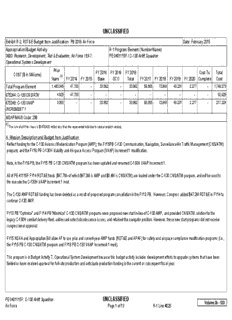
C-130 Airlift (USAF)
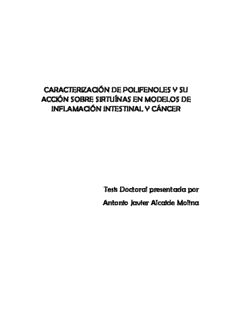
CARACTERIZACIÓN DE POLIFENOLES Y SU ACCIÓN SOBRE SIRTUÍNAS EN MODELOS DE

Desert Notes / River Notes
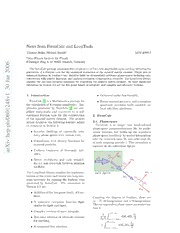
News from FormCalc and LoopTools

C. J. Cherryh - Union Alliance - Finity' s End

Exam Practice Workbook for Mathematics for the IB Diploma: Applications and interpretation HL
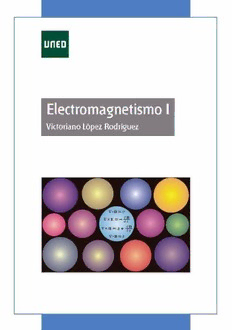
Electromagnetismo I
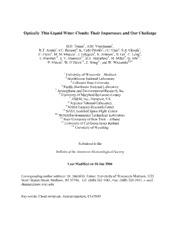
NASA Technical Reports Server (NTRS) 20080006488: Optically Thin Liquid Water Clouds: Their Importance and Our Challenge
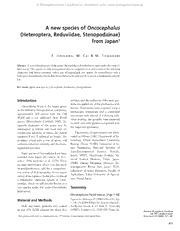
A new species of Oncocephalus (Heteroptera, Reduviidae, Stenopodainae) from Japan
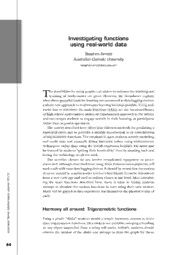
ERIC EJ744021: Investigating Functions Using Real-World Data
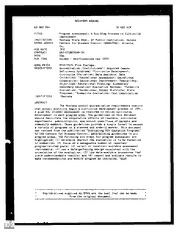
ERIC ED362564: Program Assessment: A Six-Step Process to Curriculum Improvement.
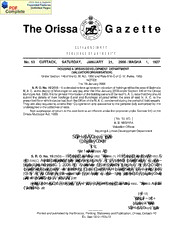
Odisha Gazette, 2006-01-07, No. 53
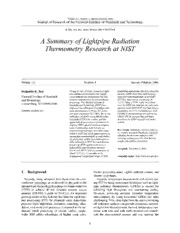
A Summary of Lightpipe Radiation Thermometry Research at NIST
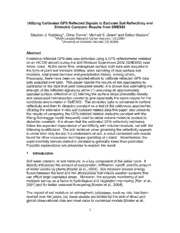
NASA Technical Reports Server (NTRS) 20080015510: Utilizing Calibrated GPS Reflected Signals to Estimate Soil Reflectivity and Dielectric Constant: Results from SMEX02
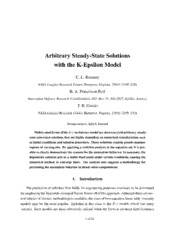
NASA Technical Reports Server (NTRS) 20080014294: Arbitrary Steady-State Solutions with the K-epsilon Model
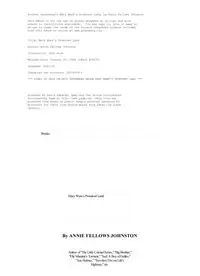
Mary Wares Promised Land by Annie Fellows Johnston
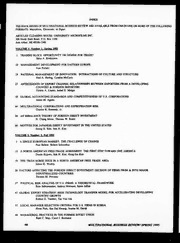
Multinational Business Review 1993 - 1994: Vol 1-2 Index

